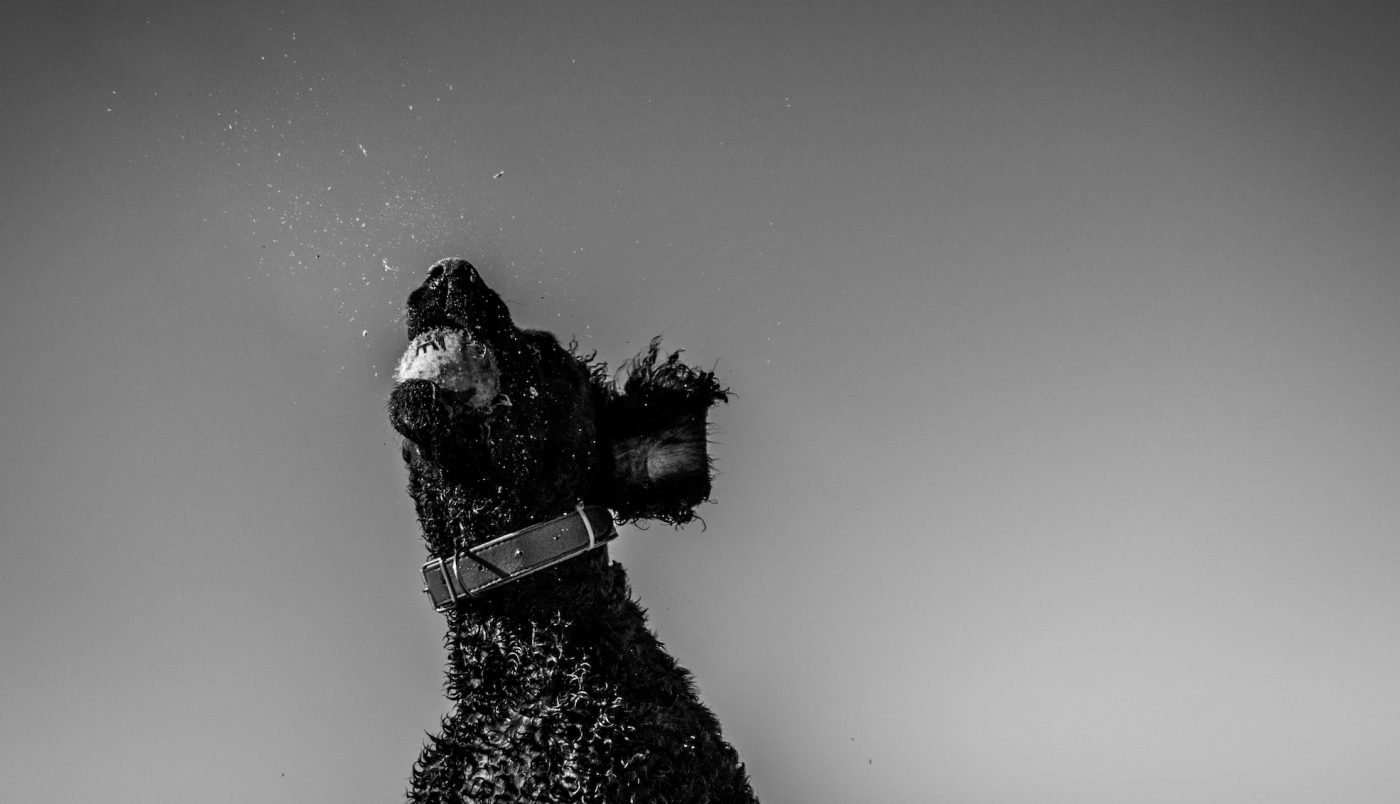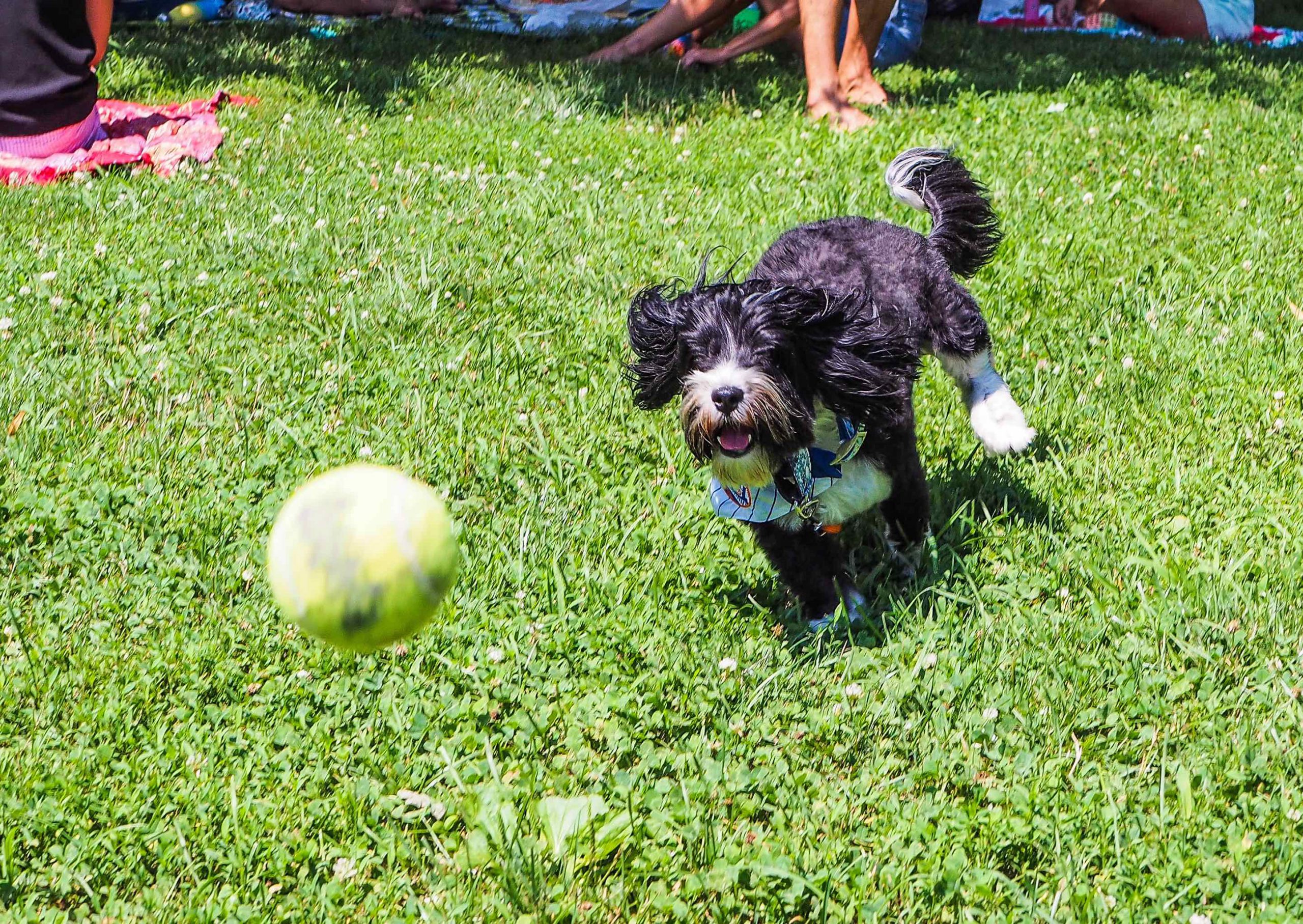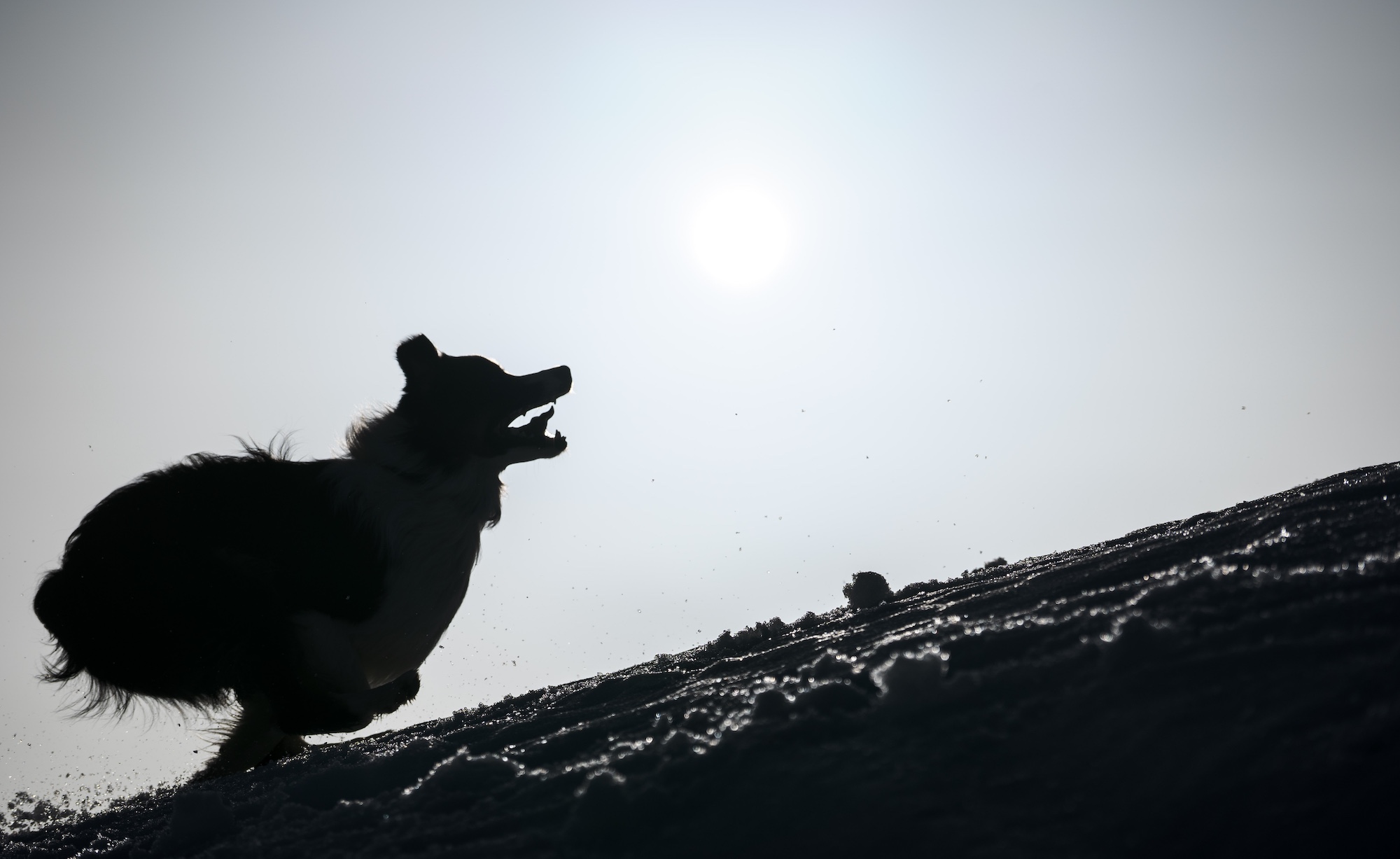- The short answer: at least 45 minutes daily.
- The longer answer: Ideally longer! If you’ve got a healthy, active dog, shoot for at least 60 minutes a day.
- Walking is important for physical and mental exercise. Even if you have a yard, try to get out for walks.
- Mental stimulation is an important part of total activity—build a few brain games into your pup’s daily “workout.”
The more we learn about the benefits of exercise, it seems there are few areas of our lives and our health that aren’t improved by physical activity.
And, like so many things, the benefits apply equally to dogs and humans.
Exercise assists in weight management, it can alleviate stress and help prevent an array of ailments, and is also key to a dog’s mental health and, ultimately, their behavior. The beautiful part of this, of course, is that for people who have dogs, reaping all these rewards together is that much more fun—it’s truly a win-win.
Conventional wisdom holds that dogs should get a minimum of 20 to 30 minutes per day, but is that really enough? Do large dogs require more exercise than small dogs? Is walking sufficient?
Here’s what you need to know about making sure your dog is getting enough exercise, why it’s so important, and how to provide more.
The case for more exercise
“Exercise helps achieve and maintain a healthy body,” says Dr. Jeff Werber, DVM. “There may be no direct correlation between disease and exercise—you can’t say ‘if I exercise, I won’t get heart disease’—however, the indirect correlation is that without exercise comes obesity, and with obesity comes heart disease, cardiovascular issues, skin issues, respiratory disease, and increased incidences of so many disorders.”
Exercise is also important for maintaining the integrity of a dog’s joints. In fact, if a dog has a joint issue, Dr. Werber, like many veterinarians, usually suggests exercise in order to strengthen the muscles that support the joint. “We always say, if an animal is nursing a joint problem or has arthritis, we do want them to exercise to maintain their strength,” he says.
Frequent exercise has also been linked to a reduced feeling of fear in dogs. Recent studies have shown that dogs who were exercised for longer periods showed less aggression, less fear of humans and objects, and lower levels of separation anxiety than dogs who were not as active.
The science is so conclusive that some countries have tried to make dog walking a matter of law. In 2020, a law was introduced in Germany that mandated the country’s dog owners walk their dogs twice a day for at least an hour total. As the minister responsible for the bill noted, “Dogs are not cuddly toys. They also have their own needs, which need to be taken into account.”
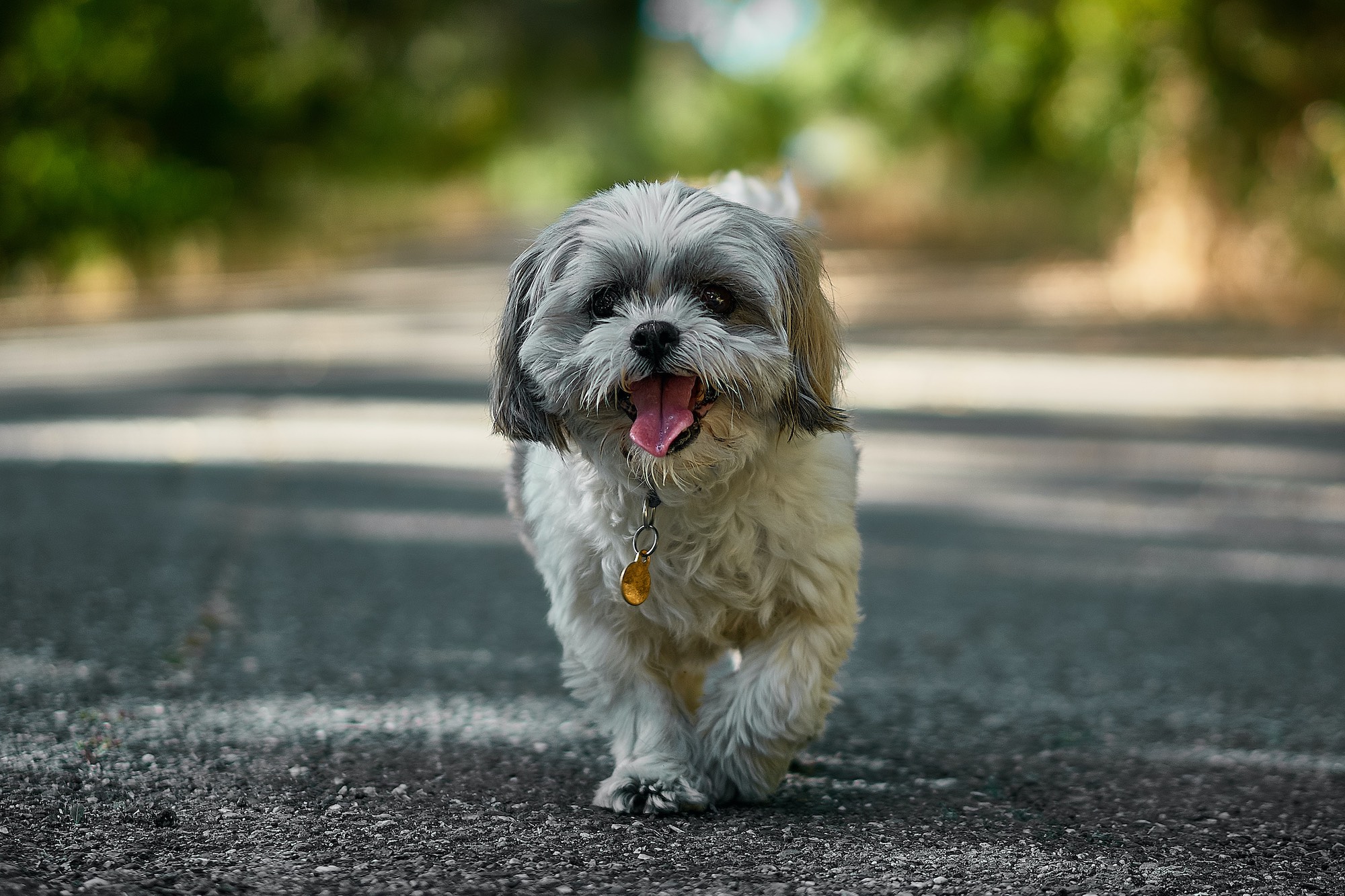
How much exercise does a dog really need?
As with so many health and wellness questions, the answer to “how much exercise is enough?” depends on your dog—their age, breed, energy level, and personality. However, all dogs who are able to move benefit from daily exercise.
30 minutes a day is perhaps the most frequently cited daily exercise quota. And for some dogs that’s ok. If you’ve got a toy-breed dog, or a less active breed like a bulldog, you can start with three walks a day totaling about 30 or 40 minutes. You may find your dog has more energy for playtime beyond that, so look for any behavior that indicates boredom or frustration.
For many dogs, though, you should be aiming for at least one hour per day of exercise. If you have a healthy adult dog, this is a good baseline.
The caveats: Note that not every type of exercise is appropriate for every dog. Be sure to consider your dog’s age and breed and what they’re naturally suited to. Greyhounds, whippets and other sighthounds are not built for long distance running, for example. Short-nosed or brachycephalic breeds like pugs are not suited to prolonged strenuous exercise (but they still need to walk!). Check with your vet on any conditions that may constrain exercise, like joint, heart, or neurological problems. Make sure to ease into any new activity slowly.
If you’re considering getting a dog, be sure to factor in exercise when matching your dog to your lifestyle. Be sure you’re able to provide enough walking and other exercise, or able to enlist help to pick up the slack.
Not just potty breaks: The importance of walking
Walking is the most natural thing in the world, for humans and canines alike. Yet this simple activity is deceptively important.
For most dogs in cities, of course, the walk is the primary form of exercise. Getting out and walking provides a much-needed calorie-burning activity, which helps with weight maintenance (and we know how important that is). But the benefits of walking don’t stop there—a brisk walk can also keep joints healthy, and regular outings can even help with urinary and digestive health.
Walks are bonding time, helping to cement a trusting relationship between you and your dog.
They also provide critical mental stimulation—allowing your dog to walk in different areas provides a world of sensory input, and teaches your dog to interact with people, objects, and other dogs.
Beyond walking
While walking is essential, many dogs benefit from other forms of exercise that help build strength, endurance, and balance.
For active, healthy dogs, a variety of exercise is important, says Dr. Darryl Millis, DVM, Diplomate of the American College of Veterinary Surgeons and the American College of Veterinary Sports Medicine and Rehabilitation, and a Certified Canine Rehabilitation Practitioner. “Dogs are aerobic animals and are built for jogging and running distances, with periodic rest. So leash walking alone will not result in peak conditioning.”
For these active pups look for activities that allow for more exertion than a walk. Dr. Millis, who also runs the online resource My Lame Dog, suggests “some aerobic activity, with speed and power building activities two to three times per week.”
Depending on your dog, this could take the form of running or jogging (off-leash or with you), swimming, playing with other dogs, sprinting up hills, a high-speed ball chase or round of frisbee-catching, game of tug, or nose work (see below).
Blake Rodriguez, trainer and founder of Dream Come True K9 recommends, trying to find what motivates or drives your dog instinctually, “and find a way to turn that into a game with rules, time and place.” That level of fulfillment, he says, will drain more energy than the average walk.
Exercise like this can help improve your pup’s flexibility and mobility, and build strength which can help protect joints.
Pup particulars
Older dogs: Everyone slows down at a certain point, but it’s important to keep your healthy senior dog moving. Daily walks and other regular exercise help keep your dog’s joints and ligaments supple, helping to stave off or reduce pain and inflammation. Slowing down too much on exercise becomes a vicious cycle as immobility begets immobility, which increases the risks of joint issues as well as obesity and all its related ailments. If your dog appears to be in pain while walking, see your vet.
Small dogs: Though a dog’s need for exercise may vary according to their breed, it’s important to note that size isn’t as big a factor as you may think. Dr. Millis notes that standard exercise principles should also apply to small dogs. Many small dogs miss out on crucial exercise (and training) because it’s perceived they just don’t need it, or are happy being carried or wheeled around.
Even when it comes to breeds like Chihuahuas, most dogs benefit from at least two to three walks and at least 30 minutes of exercise a day. “Owners should consider the length of their dogs’ legs relative to human legs when exercising,” says Dr. Millis. “And their relative speed is much faster compared to a larger dog. Therefore, they may actually be in better shape compared to some larger dogs.” One condition to watch out for is luxating patellas (something common in Chihuahuas)—it may limit dogs’ capabilities for things such as jumping, and it may predispose them to developing cranial cruciate ligament rupture if uncorrected.
Puppies: If you have a very young pup, it’s commonly recommended to take it slowly when it comes to walking and more strenuous exercise and to avoid over-exercising while puppies’ bones are still growing. But, puppies still need to play and move. “Puppies should be puppies,” says Dr Millis. “They should play when they want, and rest when they want.” Play, running and tumbling are all important in puppies to strengthen supporting muscles, tendons, ligaments, and to help them develop balance and agility. It IS important to make sure that large and giant breeds are assessed for hip dysplasia, elbow dysplasia, and osteochondritis dissecans during vet visits—too much exercise with these conditions will hasten the progression of arthritis and may be detrimental.
Let your puppy walk, run and play—and save the strenuous hikes, and jumping activities for when they’re a bit older. Now’s a great time to focus on mental exercise and training.
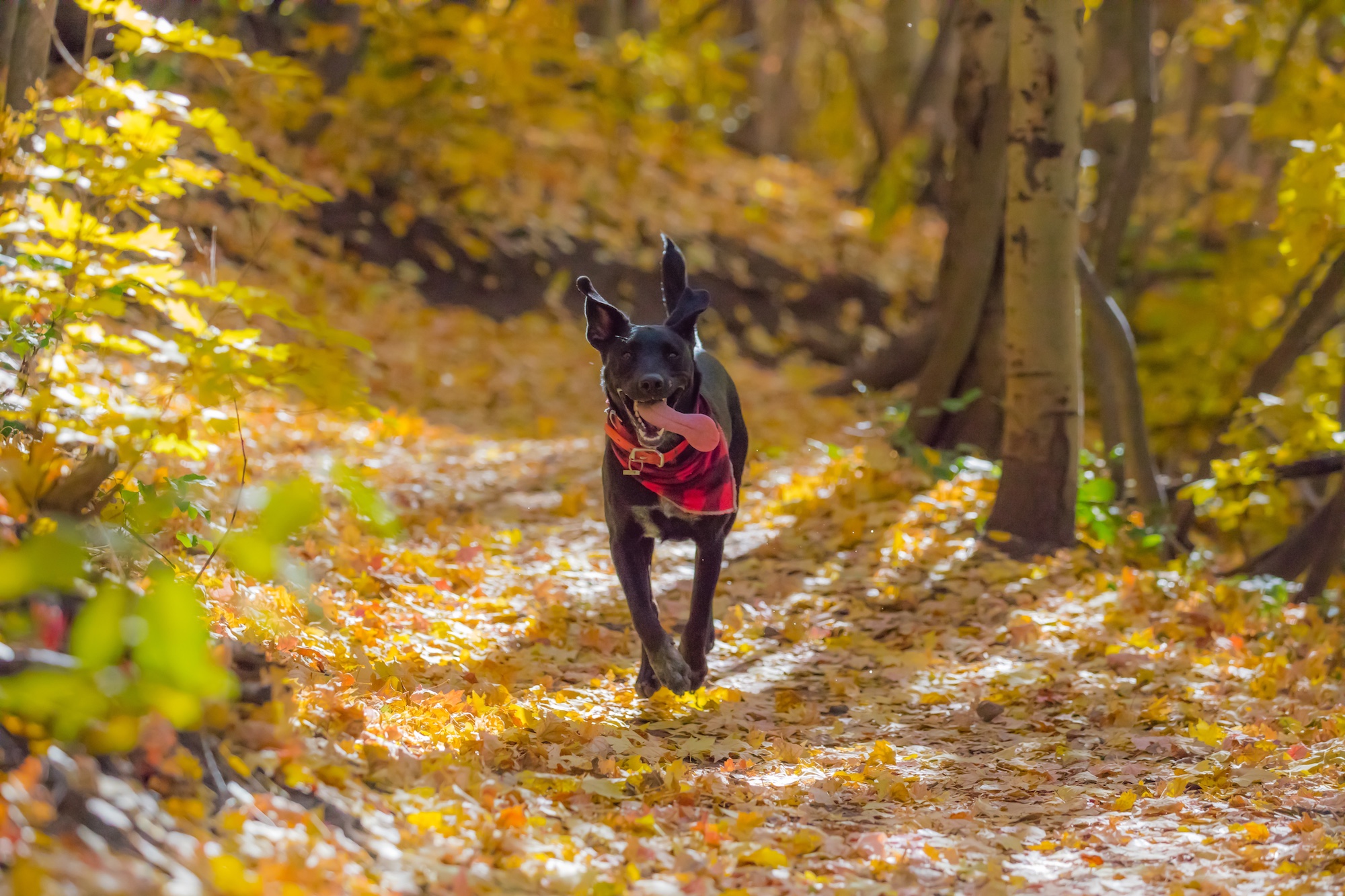
If your dog is recovering from an injury or ailment, has severe mobility issues, consult your vet about the appropriate activity option. Even for pups who can’t run around, there are plenty of ways to provide some essential exercise.
How to provide more exercise
Aim for three walks a day at a minimum. While sniffing around is good for dogs, make the most of the cardio benefits of walking by maintaining a brisk pace for a full 20 minutes before allowing a sniff break as a “reward.”
Walking aside, there are lots of other ways to pack in more exercise in a day. As with humans, even short bursts of activity are helpful, and add up to more calories burned, and a calmer healthier dog.
Make fetch happen: If you have a yard, a daily game of fetch with a tennis ball is a no-brainer.
Backyard agility: Set up your own improvised “agility-light” course—use pylons or garbage cans to create obstacles for your dog to move around. Set up low “hurdles” that they can walk or jump over.
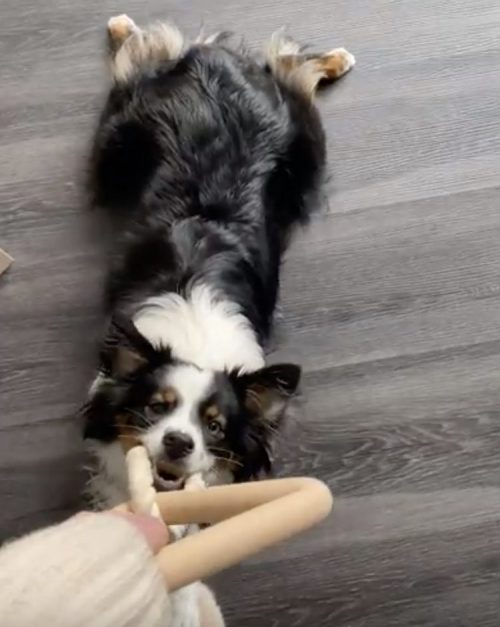
Home games
Strapped for space? No worries. Even if you live in an apartment, it’s still possible to exercise your dog.
Some hallway fetch can provide an accessible form of fun exercise (carpeted floors or other non-slippery surfaces are best).
Tug, mindfully: You don’t need a lot of space for a game of tug, which has the added benefit of providing both you and your dog with a burst of good exercise in a short amount of time. However, the game must be played on your terms. Add rules to play this game—have your dog sit or “go to place” before beginning the game, and when you say so, make sure they release the tug. The reward is the dog gets to re-engage and start the game again.
If you have the space and resources, and a dog who needs an abundance of exercise, consider a treadmill if you can’t provide sufficient outdoor exercise. Be sure to start slow, never tether your dog to the equipment, and supervise them at all times (and remember that treadmill walking is not a total replacement for outside walking).
Mental exercise is also exercise
Physical exertion is only part of the exercise equation. Mental exercise can actually burn as much of your pup’s energy as physical activity, and can have all sorts of other behavioral benefits.
There are lots of mind-body games you can improvise with things you already have at home.
Hide and seek: Your dog experiences so much of the world by smell, so lean into the olfactory when devising games. Go-to games like Hide and Seek are a great way to exercise your dog’s mind, body, and recall skills. Hide treats or coveted objects around the house. Tracking them down will keep your dog busy, and burn mental and physical energy. The game can be a way of distracting your dog from you—creating some space and not having your dog following you everywhere all day long can help stave off separation anxiety.
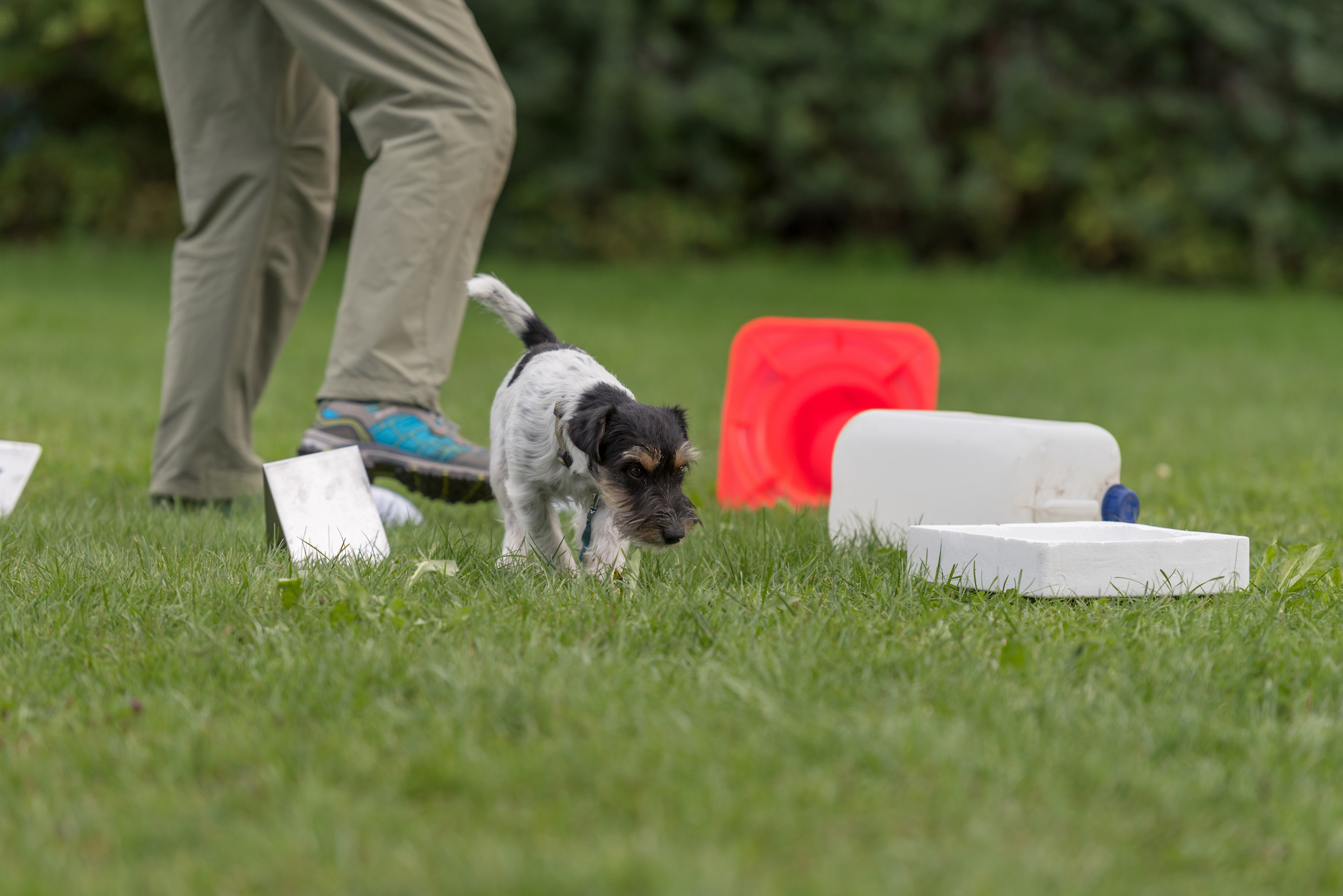
Young small Jack Russell Terrier doggy 1 year old. Little obedient dog retrieves a toy from a crowd of objects
Box games: Use the boxes from online orders for nose games. With your dog in another room, hide treats in one of a handful of boxes. Then let your dog sniff their way to the reward. Have your dog sitting or “on place” before you start the game and release them to start searching.
Training days: If you’ve been dealing with any undesirable behaviors, or you’ve always wanted to work on a particular skill, devote some time each day to training. If your dog has a tendency to “door dash,” for example—when someone approaches your home and the dog starts barking, rushes them, or, worse, runs into the street—you can work on behaviors like sitting and remaining in a designated spot when the front door opens or the doorbell rings. Start slowly; making progress on big breakthroughs takes time, patience and consistency. Many trainers around the country are offering virtual training—get in touch with your trainer, or look up a certified trainer in your area.
You can combine the best of both worlds—physical and mental exercise–in the fun sport of scent work! This is an increasingly popular activity that allows your dog to play the role of detection dog and search out hidden items using their magnificent nose. There’s tons of info and education on scent work available at places like the National Association of Canine Scent Work and Consider the Dog.
Whether you have a big dog or small dog, an active breed or a bit of a couch potato, the bottom line is that all dogs need physical and mental activity. They love to be outdoors, they love to smell with their hyper sensitive noses, and they love to walk, jog, and run. Most of all, they love to be with you, so get out there together.
Top photo by Raquel García on Unsplash.



